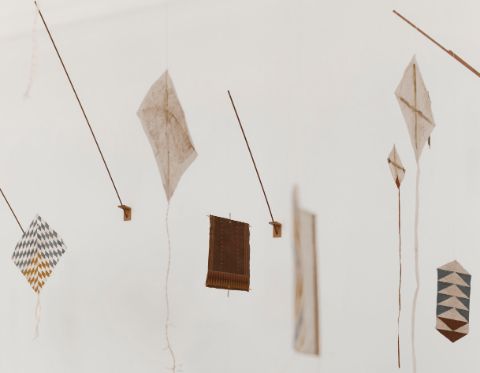Nikau Hindin

Detail. Photo: Holly Burgess
Nikau Hindin is a contemporary Māori artist deeply engaged in the renewal of the Māori aute (bark cloth) making tradition in Aotearoa/New Zealand. Bark cloth is a major cultural language in the Pacific, an art form and technology which spread together with the migration of the Austronesian ancestors of the Mā ori and of other nations in the Pacific (and Indian Ocean), who likely carried the mulberry trees from their original homeland in Taiwan throughout the Pacific for this precise purpose. Unlike other Pacific bark lineages, the Māori bark cloth technique that Hindin employs was last practised in Aotearoa more than a century ago when, under the impact of colonial exploitation of land and resources, the paper mulberry tree that is the main source of bark was almost made extinct. While also including other motifs from Māori culture as well as other designs, architecture, and textile traditions in the works shown, Hindin uses the bark as an instrument to express another Indigenous technological lineage, the kites or manu. Manu means both kite and bird in Māori, and while often used for recreation, they were also used for divination, communication, as well as a guide to new auspicious lands to settle on.
Commissioned by Haus der Kulturen der Welt (HKW), co-produced by Nikau Hindin and HKW, and realized with the support of Creative New Zealand, 2023.
Work in the exhibition: Manu Aute: Rere Runga Rawa: Ascend to the Higher Realms (2022–23), kites, mixed natural materials: kōkōwai (earth pigments) on aute (paper mulberry bark cloth) with supplejack and raupo frames and muka (flax) cordage with tikumu (mountain daisy), dimensions vary. Courtesy of the artist